Best Practices to Improve Your Rent Collection Process

7 Tips for Easier Rent Collection
This article was contributed by DoorSpot property management software. Manage your entire portfolio with one simple tool. No hidden fees or additional subscriptions are needed. Get 20% off of your first year as an AAOA member.
Managing rental properties can be both rewarding and challenging. One of the biggest headaches landlords face is making sure rent is collected on time, every time. An efficient rent collection process helps ensure the money comes in while maintaining a positive relationship with your tenants, reducing stress and saving you time and money.
Here are seven best practices to improve your rent collection process. From using technology for rent collection software and automatic payment reminders to offering various payment methods. These tips will streamline your workflow.
By following these practices, you can reduce the hassle of chasing late payments and create a more harmonious and efficient rental property management experience. Whether you’re a seasoned landlord or just starting out, read on to discover how to make rent collection easier and more reliable.
1. Use Reliable Rent Collection Software
Rent collection software is a digital tool that simplifies collecting rent payments from tenants. Popular options include Cozy, Rentec Direct, and Buildium. These tools automate invoicing, payment tracking, and reminders, reducing the administrative burden on landlords.
Benefits for Landlords:’
- Less time spent on manual tasks: Automating tasks like writing invoices and tracking ‘payments frees up your time for other important aspects of property management.
- Automated invoicing and payment tracking: Consistent and timely invoicing helps avoid the common pitfalls of human error.
- Reduced likelihood of errors and missed payments: The software minimizes mistakes, ensuring that you receive your payments on time.
Benefits for Tenants:
- Convenient and secure rent payments: Tenants can easily make payments online, reducing the hassle of writing checks or making bank transfers.
- Set up recurring payments: Tenants can automate their rent payments, ensuring they never miss a due date.
- Receive reminders and access to payment history: Tenants can view their payment history and receive reminders, which helps them stay organized and on top of their obligations.
Tips for Using Software Effectively:
- Set up recurring invoices: This ensures that invoices are sent out automatically each month, reducing the risk of missed or late payments.
- Enable notifications for upcoming invoices: Notifications can alert you when the last invoice in a series is about to be sent, allowing you to address any issues or make adjustments.
- Establish consistent due dates, invoice dates, and grace periods: Clear schedules help tenants know exactly when their payments are expected, reducing confusion and disputes.
- Let the software handle invoicing: Trusting the software to manage invoicing simplifies your business practices and ensures accuracy.
2. Automate Payment Reminders
Automated payment reminders are notifications sent to tenants about upcoming rent due dates. These reminders can be set up through rent collection software and sent via email, SMS, or app notifications.
Benefits of Automation:
- Reduces late payments: Regular reminders keep tenants aware of their payment obligations, reducing the chances of late payments.
- Ensures tenants are consistently informed: Automated systems ensure that reminders are sent out regularly, keeping rent payments top of mind for tenants.
- Helps avoid misunderstandings and missed deadlines: Clear reminders help prevent tenants from forgetting due dates, thus minimizing conflicts.
Setting Up Automated Reminders:
- Integrate with your rent collection software: Most platforms offer automated reminder features. Ensure these are enabled and customize them to your needs.
- Schedule multiple reminders: Set up reminders at different intervals (e.g., one week before, a few days before, and on the due date) to keep rent payments top of mind for tenants.
- Use various communication channels: Reach tenants through their preferred channels by using a mix of email, SMS, and app notifications.
- Personalize messages: Include tenant names and specific payment details in reminders to make them more effective and engaging.
3. Offer Multiple Payment Options
Offering multiple payment options means giving tenants various ways to pay their rent, such as bank transfers, credit cards, ACH payments, and online payments.
Benefits of Multiple Payment Options:
- Increased likelihood of on-time payments: Providing various options makes it easier for tenants to pay their rent on time, regardless of their financial situation or preferences.
- Flexibility accommodates different financial preferences: Tenants can choose the payment method that works best for them, improving their overall satisfaction.
Implementing Payment Options:
- Set up online payment systems: Use rent collection software that supports multiple payment methods, including credit cards, ACH transfers, and online payments. This centralizes all payments and simplifies tracking.
- Partner with services offering split payments: Some services allow tenants to divide their rent into multiple payments throughout the month, which can be particularly helpful for those with varying income schedules.
- Clearly communicate available payment options: Make sure tenants understand the payment options available to them during the lease signing and in regular communications. Provide detailed instructions on how to use each method.
- Review and adjust payment methods regularly based on tenant feedback: Monitor the effectiveness of each payment method and adjust or add options based on tenant feedback and payment trends.
4. Clear and Consistent Communication
Maintaining clear and consistent communication with tenants is crucial. It prevents misunderstandings and fosters a positive landlord-tenant relationship.
Benefits of Good Communication:
- Prevents misunderstandings about rent payments and lease terms: Clear communication ensures that tenants understand their obligations, reducing the chances of disputes.
- Builds trust and respect between landlords and tenants: Open and honest communication helps build a positive relationship, leading to better cooperation and fewer issues.
Best Practices for Communication:
- Provide regular updates: Use newsletters, emails, or tenant portals to keep tenants informed about their rent payments, policy changes, or upcoming maintenance.
- Clearly outline rent payment policies: Ensure that all policies regarding rent payments, late fees, and maintenance requests are clearly stated in the lease agreement and reiterated in regular communications.
- Respond to tenant inquiries promptly: Address tenant concerns quickly to show that you value their tenancy and are committed to addressing their needs.
- Use multiple channels: Communicate through various channels such as emails, texts, and phone calls to ensure important information reaches all tenants.
5. Establish a Clear Late Payment Policy
A late payment policy outlines the consequences and procedures for handling late rent payments. It includes grace periods, late fees, and steps for consistently late payments.
Benefits of a Late Payment Policy:
- Encourages timely payments: Knowing there are consequences for late payments can motivate tenants to pay on time.
- Provides a structured approach for handling late payments: A clear policy reduces confusion and ensures that both landlords and tenants understand the repercussions of late payments.
Crafting and Enforcing the Policy:
- Specify grace periods: Clearly define any grace periods allowed before a payment is considered late. This gives tenants a small buffer while still emphasizing the importance of timely payments.
- Outline reasonable and compliant late fees: Make sure late fees are fair and comply with local regulations to avoid legal issues.
- Communicate the policy clearly: Ensure that the late payment policy is explained during the lease signing and reiterated in regular communications.
- Consistently enforce the policy: Apply the late payment policy uniformly to all tenants. This ensures fairness and reinforces the importance of timely payments.
6. Regularly Review and Update Your Processes
Regularly reviewing your rent collection processes ensures they remain effective and up-to-date with current technologies and best practices.
Benefits of Regular Reviews:
- Stay ahead of potential issues: Regular reviews help identify problems before they become major issues, allowing for timely adjustments.
- Leverage new tools and technologies: Keeping up with technological advancements can further streamline your rent collection process and improve efficiency.
- Maintain efficient and effective management: Continuous improvement keeps your operations running smoothly and ensures the best practices are always in place.
Steps for Reviewing Processes:
- Schedule regular reviews: Set a specific schedule for reviewing your rent collection processes, such as quarterly or annually, to ensure it gets done regularly.
- Gather feedback from tenants: Ask tenants for their feedback on the current rent collection process to gain insights into areas that need improvement.
- Stay informed about new rent collection tools: Research and evaluate new technologies and tools that could benefit your rent collection process.
- Monitor results after updates: After making changes, monitor the results to ensure they lead to the desired improvements and adjust as needed.
7. Provide Incentives for On-Time Payments
Providing incentives for on-time payments, ranging from small rewards to significant benefits, can motivate tenants to pay their rent promptly.
Benefits of Positive Reinforcement:
- Improves tenants’ payment habits: Rewarding on-time payments encourages tenants to develop good payment habits.
- Focuses on rewarding good behavior: Positive reinforcement can be more effective in encouraging timely payments than penalties alone.
Implementing Incentives:
- Use rent collection services that report on-time payments to credit agencies: This helps tenants build their credit score, providing a strong incentive to pay on time.
- Offer small rewards: Consider giving gift cards or discounts on future rent to tenants who consistently pay on time. Small rewards can have a big impact on motivation.
- Implement a recognition program: Publicly acknowledge tenants who pay on time in newsletters or tenant portals. Recognition can be a powerful motivator.
- Provide flexible payment options: Allow tenants to split payments or choose their payment schedule, making it easier for them to pay on time.
Conclusion
By following these seven best practices, you can optimize your rent collection process, saving time and reducing stress while improving relationships with your tenants. Start incorporating these practices today and see.

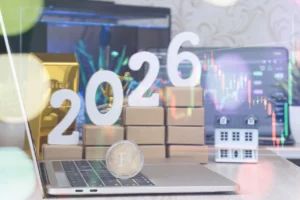
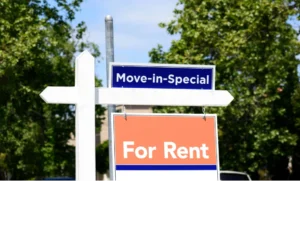

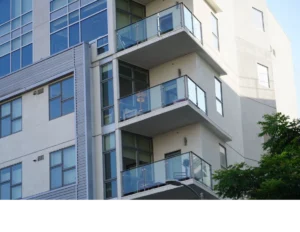
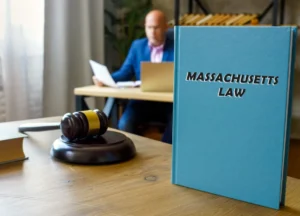


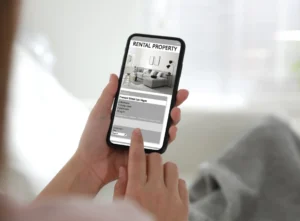




 Accessibility
Accessibility